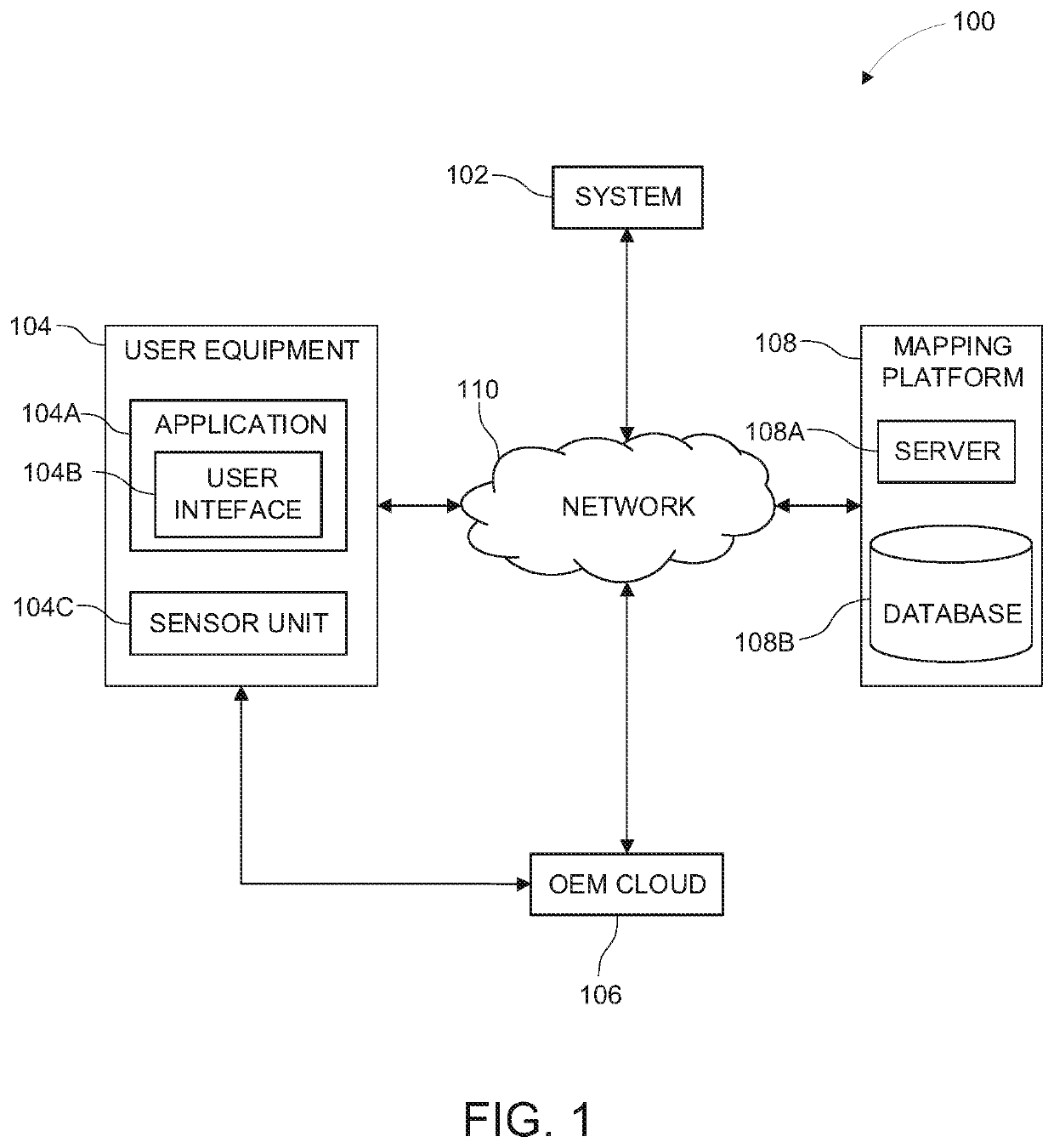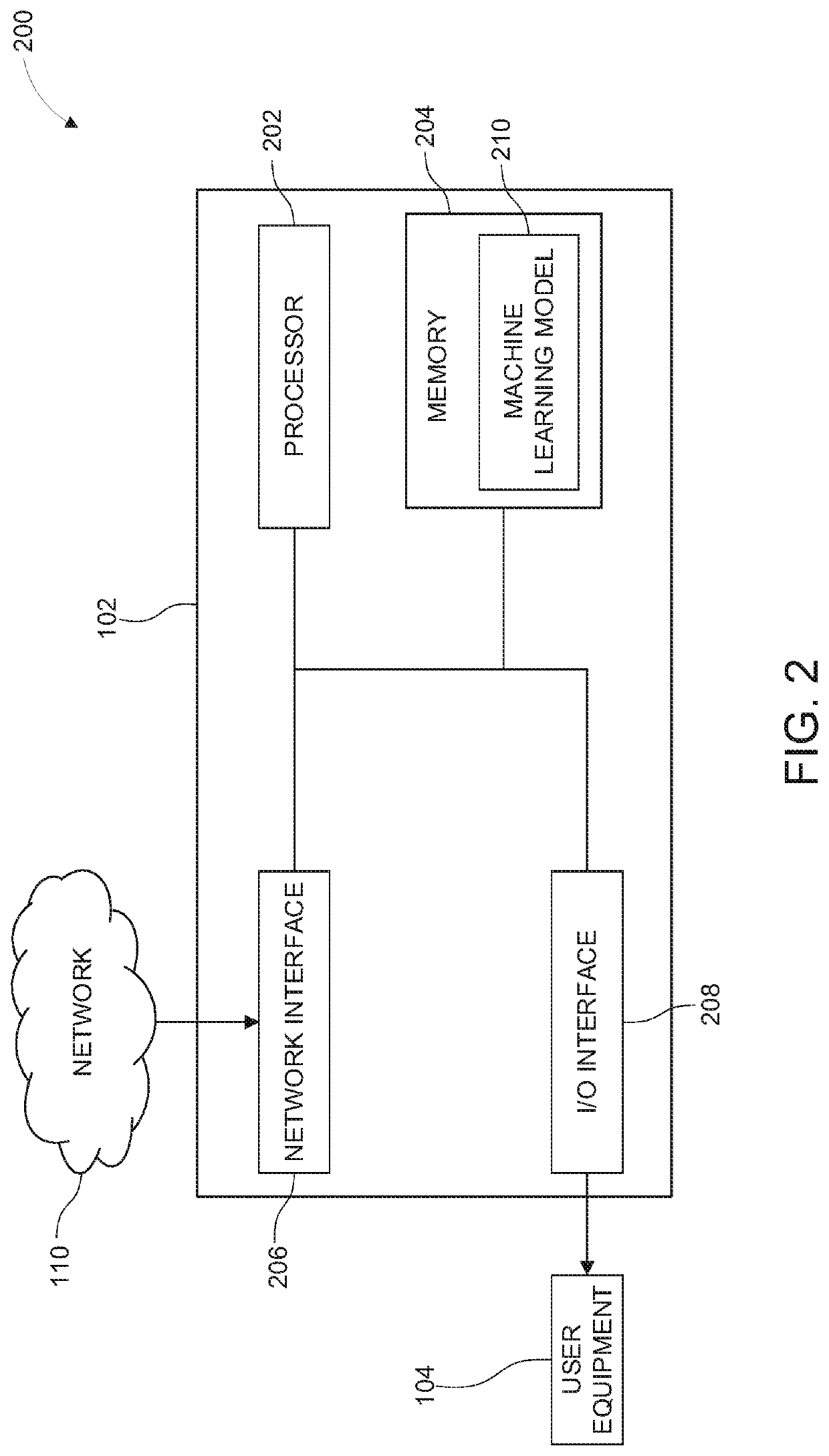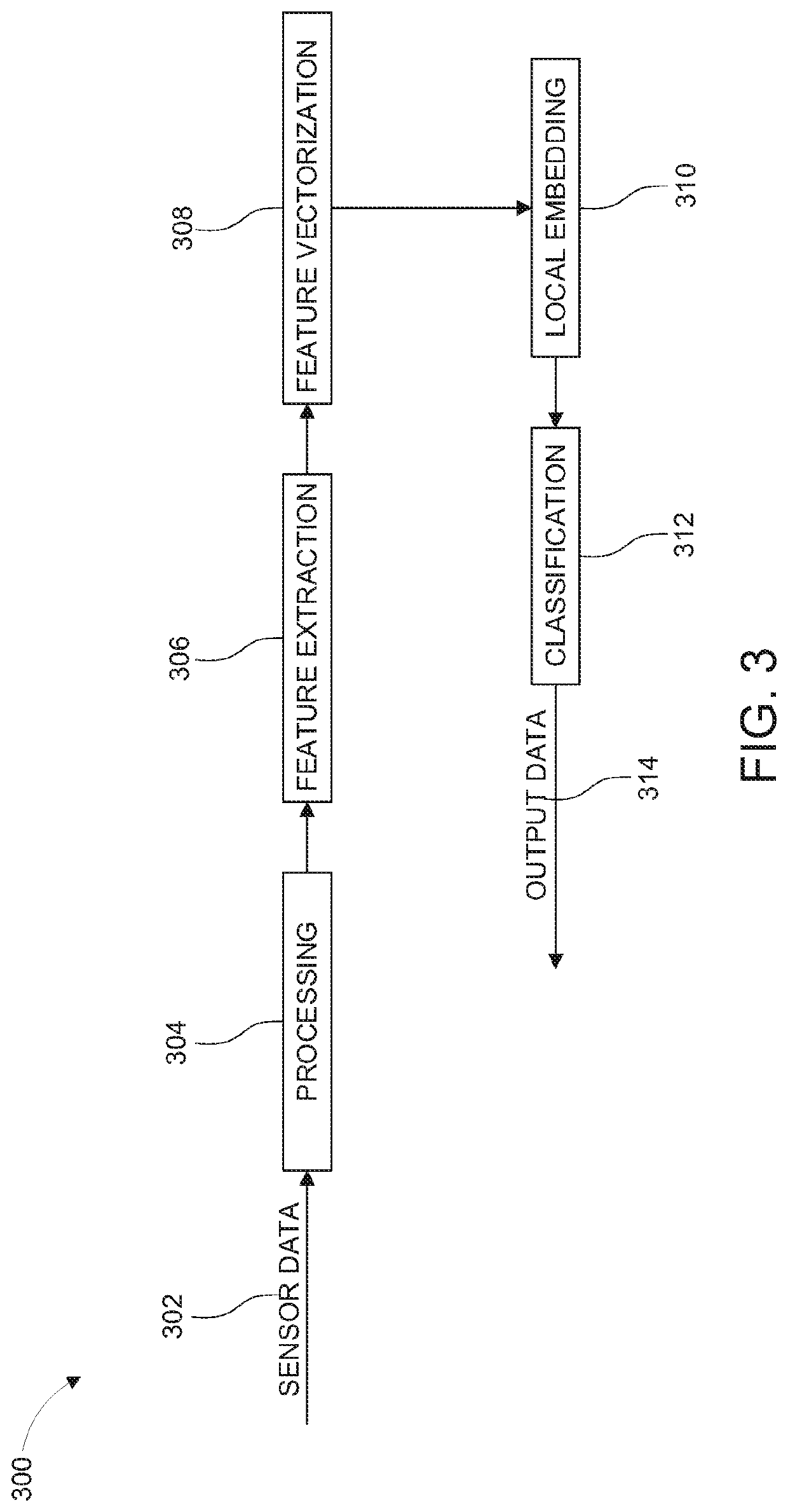Automatic building detection and classification using elevator/escalator/stairs modeling-mobility prediction
a technology of automatic building detection and classification, applied in the field of trained machine learning models, can solve problems such as inability to meet the accuracy demands of services, application challenges, and inability to meet the requirements of services, and achieve the effect of facilitating data service innovation
- Summary
- Abstract
- Description
- Claims
- Application Information
AI Technical Summary
Benefits of technology
Problems solved by technology
Method used
Image
Examples
Embodiment Construction
[0027]A system, a method, and a computer program product are provided herein in accordance with an example embodiment for determining one or more transport modes for one or more buildings in a geographic region. In some example embodiments, a method, a system, and a computer program product provided herein may also be used for classifying one or more buildings into different types of buildings. In some example embodiments, a method, a system, and a computer program product provided herein may also be used for determining population distribution of users for one or more buildings in a geographic region. In some example embodiments, a method, a system, and a computer program product provided herein may also be used for determining user profile of one or more users in one or more buildings. In further example embodiments, a method, a system, and a computer program product provided herein may also be used for determining mobility pattern of one or more users for one or more buildings. T...
PUM
 Login to View More
Login to View More Abstract
Description
Claims
Application Information
 Login to View More
Login to View More - R&D
- Intellectual Property
- Life Sciences
- Materials
- Tech Scout
- Unparalleled Data Quality
- Higher Quality Content
- 60% Fewer Hallucinations
Browse by: Latest US Patents, China's latest patents, Technical Efficacy Thesaurus, Application Domain, Technology Topic, Popular Technical Reports.
© 2025 PatSnap. All rights reserved.Legal|Privacy policy|Modern Slavery Act Transparency Statement|Sitemap|About US| Contact US: help@patsnap.com



